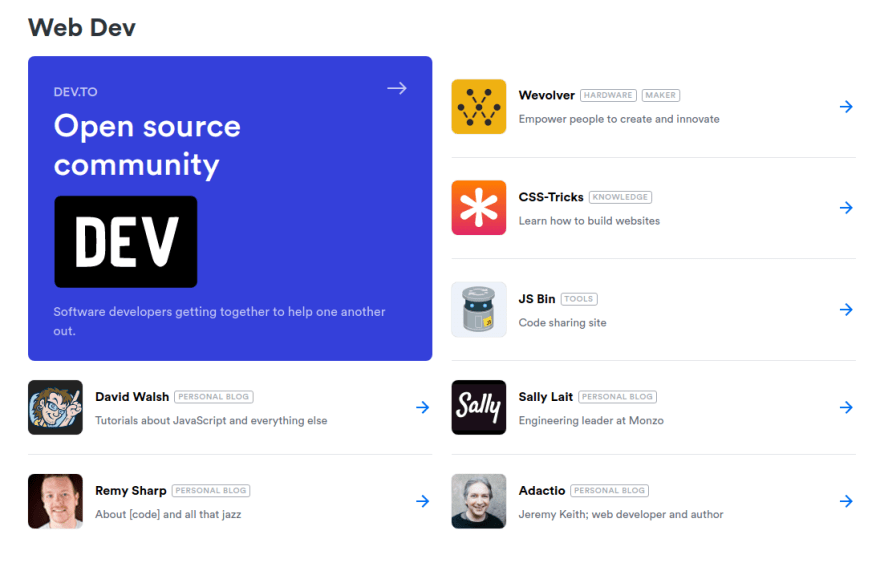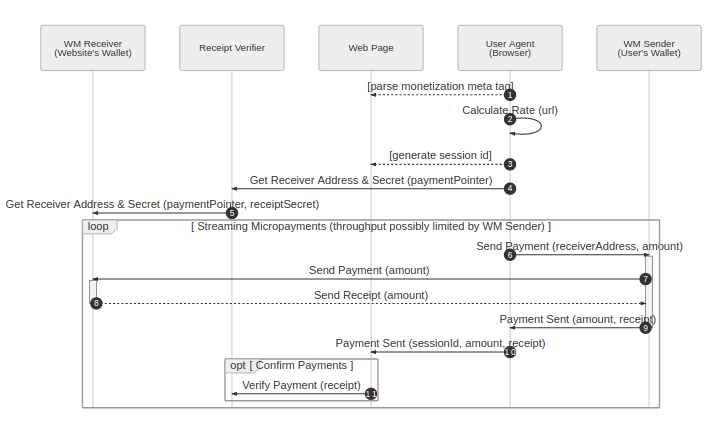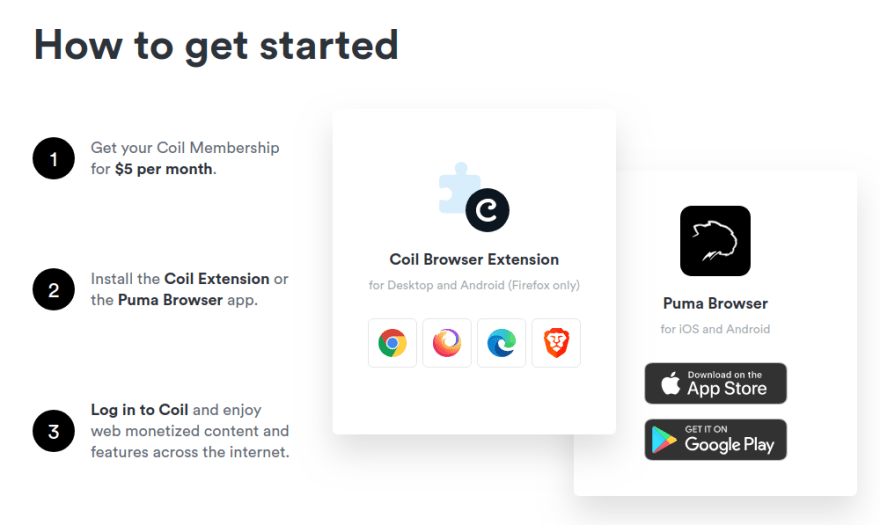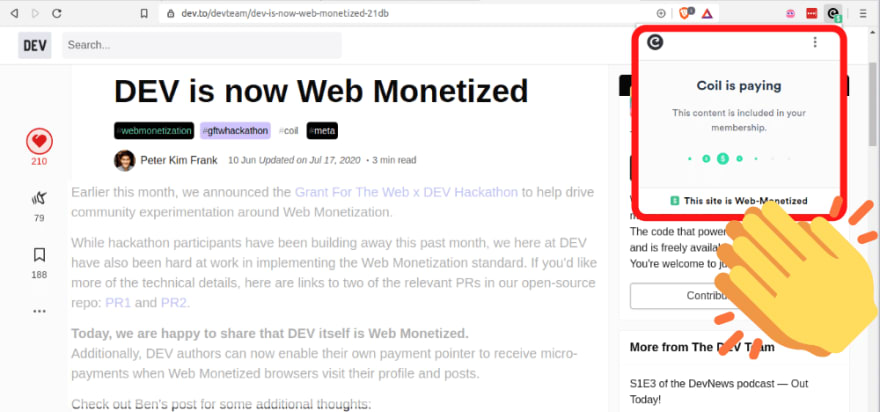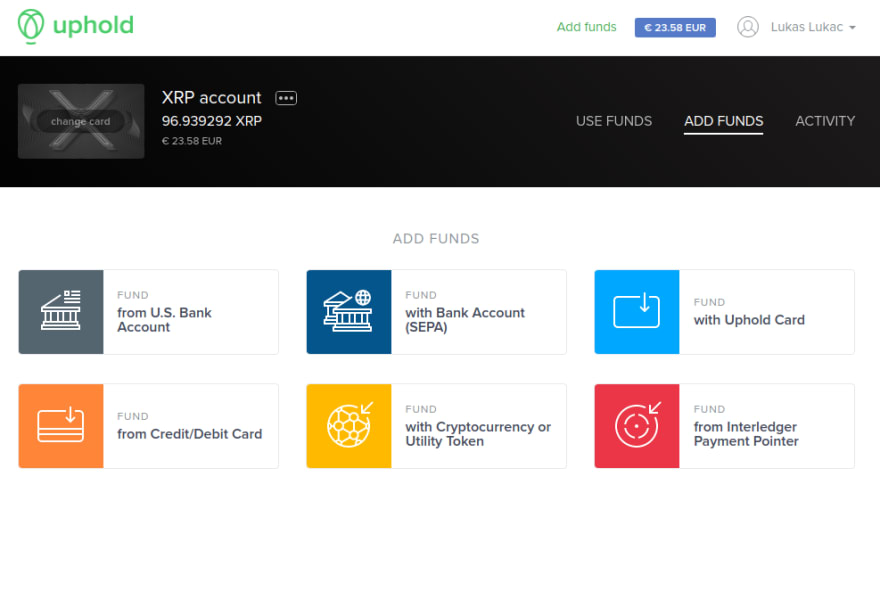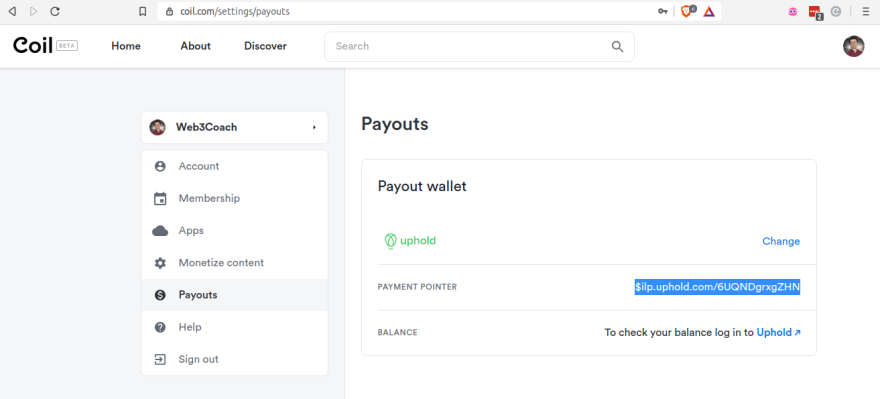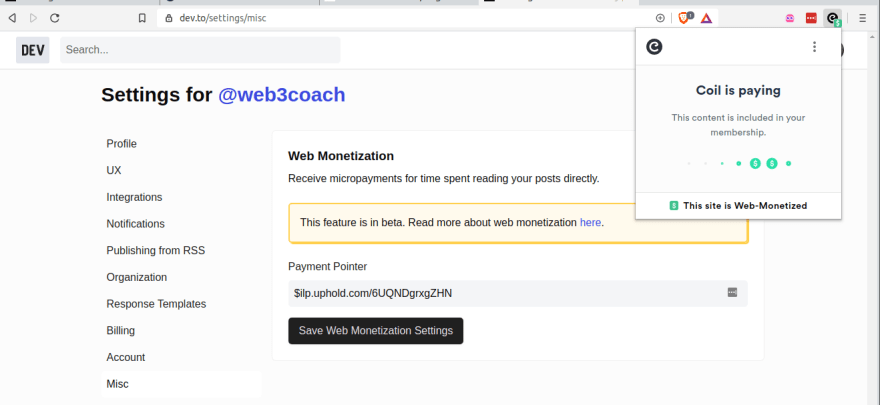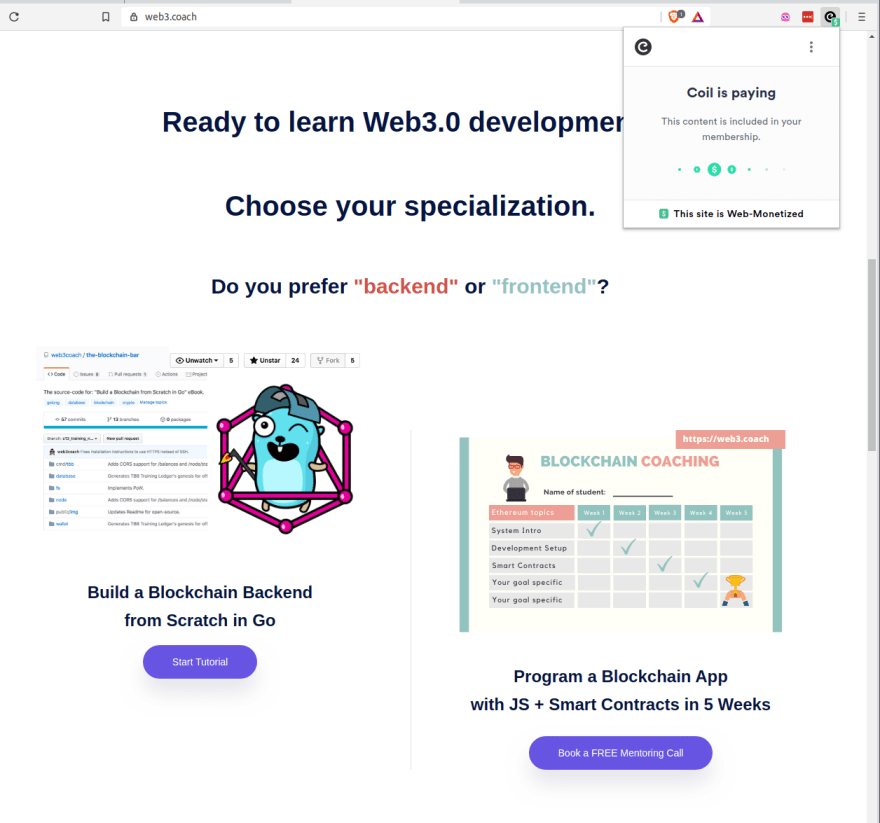Stream micro-payments to your favorite content creators

Lukas Lukac
Posted on August 25, 2020

Welcome to a new series: real-world blockchain use-cases.
You will learn how blockchain can be used to solve various day-to-day business challenges.
Problem #1
The Web 2.0 business model is broken.
Why?
Ads business works best at scale.
- On a centralized platform where you spend as much time as possible, with personalized suggestions of what to watch/read next.
- On a platform where you can be perfectly tracked. Preferably already signed in. Cross-device cookies and anonymous sessions are a pain the ass to track. Facebook, Youtube, Instagram, Twitter, LinkedIn, X, Y, Z platforms convinced creators to upload their content and give up the control in exchange for an ads revenue $$$$.
Ads business model contributed to the formation of massive platforms and a decline in personal blogs and unique independent sites.
Did you ever try to include a link to an external site, even your blog, from your LinkedIn post? The LinkedIn algorithm will teach you a lesson about post views.
You are being held as a hostage. Please, someone, call the SWAT team finally.
What about subscriptions?
Let's say you don't want to trade your privacy or attention for money.
Subscription business model FTW!
Except… The average American already subscribes to 3.4 on-demand video services, and that's not even counting other media such as music, podcasts, books, or subscriptions to individual creators.
How many do you have? I personally have seven recurring monthly subscriptions.
Can we do better?
Solution - Web Monetization
"Web Monetization provides an open, native, efficient, and automatic way to compensate creators, pay for API calls, and support crucial web infrastructure."
A neutral protocol for transferring money. Interledger provides a simple, ledger-agnostic, and currency-agnostic method to transfer small quantities of money (no more - minimum 5$ card payment nonsense in 2020).
Do you want to transfer 1M $? Okay. 4 seconds. 0 fees.
Do you want to transfer 1$? Okay. 4 seconds. 0 fees.
Do you want to transfer 0.001$? Okay. 4 seconds. 0 fees.
Web monetization is about streaming micro-payments from consumers DIRECTLY to the content creators, without a middleman taking 70% cut from all the profit like in the music, movie, book, and every other industry.
Advantages
- one budget for all your subscriptions (you will learn how to set it up at the bottom of this post)
- real-time salary - the content creator is receiving money simultaneously as her/his readers consume the content
- no hidden fees
- decentralized protocol empowering freedom of speech, user rights, and privacy
- no content firewalls - looking at you Financial Times financial times firewall
Okay, this is too good to be true. What are the cons?
Disadvantages
- The payments are streamed in small quantities. For the idea to work, a sufficient amount of users have to set up the Web Monetization Browser Extension to provide liquidity (e.g., You received 0.002295 XRP from Interledger Network).
- The concept is still a bit "techy" from the UX perspective.
- Educational gap - users don't understand tokens or advantages of p2p systems YET.
Fortunately, all of this can and will be tackled in the upcoming months. The UX will get better, and the news will spread.
So, how does the situation looks now? Who is using the protocol?
Existing clients
And others.
Technical Flow Diagram
Source: https://webmonetization.org/docs/explainer
Prerequisites
- Users must have an account or subscription with a Web Monetization provider (also known as a WM sender).
- Users must have a Web Monetization agent installed in their browser with the necessary authorization to initiate payments from the WM provider on the user's behalf.
- Websites must sign up with, or run their own, Web Monetization receiver.
Sequence diagram
Ready to join the community and become a member of the Web 3.0 monetization movement in under 5 minutes?
Let's go!
Tutorial - Setup your Web Monetization
DISCLAIMER: This is not financial advice. I am NOT affiliated with UpHold, Ripple, or Coil, but I like their technology a lot!
In the next five steps, we will configure Web Monetization from both user and content creator perspective. We will pay others as we browse the web, and we will receive money as other users engage with our content.
Two steps to support content creators on the web:
- Start a Coil subscription
- Test your subscription
1) Start a Coil subscription
Coil is a company financed by Ripple. A San Francisco start-up that is also behind the Interledger protocol.
Ripple, together with the open-sourced community, develops XRP blockchain ledger designed for payments. XRP's main value proposition is to be efficient and fast. Two fundamental requirements to enable micro-payments on the web.
You install Coil's Browser Extension and set up a 5$ monthly subscription. When your browser extension detects ANY website powered by web monetization such as https://css-tricks.com or https://dev.to, it will start streaming XRP micro-payments to the website owner OR directly to the content creator behind a specific article/tutorial/music/content!
Yey! Simple as that. One subscription to rule them all, and to reward the content creators across the globe!
Enough theory.
Open https://coil.com and follow the "how to get started" instructions.
- Register as a member
- Active a 5$ subscription
- Install the extension
Done?
Let's test it.
2) Test your subscription
Open any website powered by the web monetization protocol.
E.g., this platform.
All you have to do is browse around as a typical consumer, and you are actively supporting the authors in real-time (see the browser extension in the top-right corner in action). Coil client will be streaming tiny amount from your subscription to the Payment Receiver.
This is possible because this platform has configured its Web Monetization tag in the page header:
Perfect.
How did they do it, and how can you do it as well for your website?
I will show you in the next four steps.
Four steps to become a content creator and get paid:
- Set up a web monetized wallet
- Get your Payment Pointer
- Generate your meta tag
- Include the meta tag on your website
1) Set up a web monetized wallet
I created an account on UpHold.com and deposited 20€ using my debit card. Then I exchanged the 20€ for XRP cryptocurrency. The depositing step is optional, but I wanted to have some XRP for future tutorials.
This is how my UpHold wallet looks like:
2) Get your Payment Pointer
Click on the last option from the previous screen - "from Interledger Payment Pointer" and generate a new one Payment Pointer.
My one is:
Copy this Payment Pointer to every platform where you post regularly.
I configured two websites so far:
- Coil
- Dev.To
To configure Coil, open https://coil.com/settings/payouts, and paste your Payment Pointer.
To configure the DevTo, open https://dev.to/settings/misc, and paste your Payment Pointer. Once you do so, you will receive streamed micro-payments as other users engage with your content.
3) Generate your meta tag
You can find it pre-generated in the Coil settings:
4) Include the meta tag on YOUR website
Paste the Monetization tag to your website / blog.
Commit. Push.
You are ready to receive real-time XRP payments as long as your users have an active Coil extension :)
Result on my website https://web3.coach:
A few minutes after you deploy the Monetization tag, and as Coil members will reach your website, you will start receiving XRP payments for your excellent content:
You received 0.002295 XRP from Interledger Network.
Welcome to Web 3.0!
If you like the p2p monetization concept, re-tweet and spread the word!
The Web 2.0 business model is broken.
- ads
- no privacy
- middlemen taking 70% of profits from content creators
🧵A thread how blockchain can help:10:16 AM - 25 Aug 2020

Posted on August 25, 2020
Join Our Newsletter. No Spam, Only the good stuff.
Sign up to receive the latest update from our blog.

